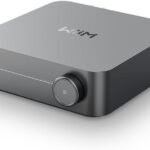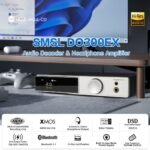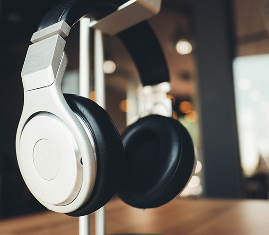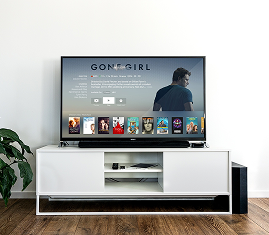Imagine immersing yourself in your favorite music, with each note and each lyric coming to life in stunning clarity. This is made possible by a device known as a DAC, which stands for Digital-to-Analog Converter. It takes the digital music stored in your devices and transforms it into an analog signal that can be played through your headphones, speakers, and other audio equipment. But what exactly is a DAC, and how does it work? Let’s unravel this technology and discover the magic behind it.

So, what is a DAC?
Definition of DAC
A DAC, or Digital-to-Analog Converter, is a device that converts digital audio signals into analog signals. It takes the digital music stored in a computer, smartphone, or any other digital source. It transforms it into a format that can be played through headphones, speakers, or other audio devices. In simpler terms, a DAC translates the binary code of digital audio files into continuous analog signals that can be perceived as sound.
Functionality of DAC
The primary function of a DAC is to accurately convert digital audio signals into analog signals that can be sent to speakers or headphones. It takes the binary code of the digital audio files and transforms it into a continuous stream of electrical signals that amplifiers can process and ultimately turn into sound vibrations. This conversion process is crucial in ensuring the fidelity and quality of the audio playback.
Necessity of DAC in Audio Devices
In today’s digital music landscape, where most audio files are stored in digital formats and devices such as smartphones, computers, and music streaming services are widely used, a DAC is critical in enabling high-quality audio playback. Without a DAC, digital audio signals would remain in their digital form, making them unable to be processed and played as audible sounds. A DAC essentially bridges the gap between digital music files and the analog world of audio devices, ensuring we can enjoy our favorite music with clarity and accuracy.
History and Evolution of DAC
Initial Development of DAC
The development of DACs can be traced back to the early days of digital audio technology. In the 1970s, as digital audio formats emerged, engineers realized the need for a device to convert digital audio signals into analog signals. The initial DACs were relatively simple and used basic conversion methods. Their primary purpose was to make digital audio playable through analog audio equipment.
Evolution and Advancements in DAC
Over the years, DAC technology has witnessed significant advancements and improvements. As digital audio formats became more sophisticated, so did the DACs. The evolution of DACs led to the introduction of higher resolution and improved signal processing capabilities. The development of more accurate and efficient DAC chips revolutionized the audio industry and paved the way for high-quality audio reproduction.
Current State of DAC Technology
Today, DAC technology has reached a level of sophistication and precision unimaginable in the early days. Modern DACs can handle high-resolution audio formats and reproduce audio with exceptional clarity and accuracy. They are used in various audio devices, including professional audio equipment, consumer electronics, and smartphones. DACs have become an integral part of the audio industry, enabling music enthusiasts to experience their favorite songs in stunning detail.
Types of DACs
Stand-Alone DACs
Stand-alone DACs are separate devices that are dedicated solely to the task of digital-to-analog conversion. They are typically designed for audiophiles and professionals who demand the highest level of audio quality. Stand-alone DACs often feature advanced circuitry, high-quality components, and multiple input and output options. These DACs can be connected to various audio sources, such as computers, media players, or CD players, and they significantly improve sound quality compared to built-in DACs found in other devices.
Portable DACs
Portable DACs, as the name suggests, are designed for on-the-go use. They are compact, lightweight, and typically offer plug-and-play functionality. Portable DACs are often used with smartphones, tablets, or laptops to enhance audio quality on the move. They can be connected to these devices via USB or other digital interfaces and provide a significant improvement over the built-in DACs found in portable devices. Portable DACs are an excellent option for music enthusiasts who want to enjoy high-quality audio wherever they go.
DACs in AV Receivers
AV receivers, commonly used in home theater setups, also incorporate DACs. These receivers serve as the central hub for audio and video signals. The built-in DACs in AV receivers convert digital audio signals from various sources, such as Blu-ray players or game consoles, into analog signals that can be sent to speakers for audio playback. DACs in AV receivers are often designed to handle surround sound formats, providing immersive and realistic audio experiences in home theater environments.
DACs in Smartphones and Laptops
Most smartphones and laptops today come equipped with built-in DACs. These integrated DACs convert digital audio signals from the device’s storage or online streaming services into analog signals that can be played through speakers or headphones. However, the quality of these built-in DACs can vary significantly, with some devices offering subpar audio performance. To overcome this limitation, there is a growing market for external DACs that can be connected to smartphones or laptops to enhance the audio quality.
Components of a DAC
Input Processor
The input processor in a DAC is responsible for receiving the digital audio signal from the source device. It may include components like USB interfaces, optical inputs, or coaxial inputs, depending on the connectivity options supported by the DAC. The input processor ensures compatibility between the source device and the DAC, enabling a seamless connection and data transfer.
Transport
The transport component of a DAC is responsible for retrieving the digital audio data from the source device and transmitting it to the digital decoder. It may involve mechanisms such as CD transports, USB interfaces, or wireless connections, depending on the type of audio source and the connectivity options provided by the DAC.
Digital Decoder
The digital decoder is the heart of the DAC and performs the crucial task of decoding the digital audio data it receives from the transport component. It interprets the digital data, reconstructs the audio waveform, and prepares it for conversion into analog signals. The digital decoder plays a significant role in ensuring accurate and faithful audio reproduction.
Output Amplifier
The output amplifier in a DAC takes the analog signals produced by the digital-to-analog conversion process and amplifies them to a level suitable for driving speakers or headphones. The quality of the output amplifier can significantly impact the overall sound quality and fidelity of the DAC.
Power Supply
The power supply is an essential component of any DAC. It provides the necessary electrical power to operate the various circuitry and features of the DAC. A stable and clean power supply is crucial for achieving optimal performance and minimizing any potential interference or noise that could degrade the audio quality.
Working Principle of DAC
Digital to Analog Conversion Process
A DAC’s working principle revolves around converting binary digital signals into continuous analog signals. The digital audio data received by the DAC is typically in the form of a series of binary numbers, representing the amplitude of the audio signal at different points in time. The DAC interprets these binary numbers and converts them into continuous analog voltage or current waveforms that can be processed by audio equipment and transformed into audible sound.
Role of Bit Depth and Sampling Rate
The quality of the digital-to-analog conversion is influenced by two key factors: bit depth and sampling rate. Bit depth refers to the number of bits used to represent the audio signal’s amplitude. A higher bit depth allows greater precision in defining the movement, improving dynamic range and finer audio detail. Similarly, the sampling rate determines the number of samples taken per second to represent the audio signal. A higher sampling rate allows a more accurate representation of the original analog waveform, resulting in a faithful audio reproduction.
Impact of Jitter on DAC Performance
Jitter refers to the variation in the timing of the arrival of digital audio samples. It can be caused by imperfections in clock signals used in a DAC. Excessive jitter can result in timing errors and inaccuracies in the conversion process, leading to degraded audio quality. High-quality DACs employ various techniques, such as advanced clocking mechanisms and jitter reduction algorithms, to minimize the impact of jitter on the performance of the DAC and ensure accurate and precise conversion of digital audio signals.
Quality Factors of a DAC
Resolution
Resolution refers to the level of detail and accuracy with which a DAC can reproduce the original audio signal. The bit depth of the DAC primarily determines it. A higher resolution DAC, with a more significant number of bits, can represent the audio signal with greater precision, resulting in a more faithful reproduction of the original sound.
Signal-to-Noise Ratio
The signal-to-noise ratio (SNR) measures the amount of background noise in the analog signal produced by a DAC. A higher SNR indicates a cleaner and more noise-free audio output. It is an important quality factor as it determines the overall clarity and fidelity of the audio playback.
Total Harmonic Distortion
Total Harmonic Distortion (THD) measures the degree to which a DAC introduces additional harmonics or distortion to the audio signal. Lower THD values indicate a more accurate and faithful reproduction of the original sound, as the DAC introduces minimal unwanted artifacts or distortions.
Channel Separation
Channel separation refers to how a DAC can separate the audio signals intended for different channels, such as left and right speakers. It is crucial in stereo sound reproduction, ensuring that each channel receives the appropriate audio signals without bleeding or crosstalk. Higher channel separation values result in more accurate stereo imaging and a more immersive listening experience.
How DAC Improves Sound Quality
Improvement in Sound Detail
One of the primary benefits of using a DAC is its improved sound detail. Accurately converting digital audio files into analog signals ensures no audio information is lost during the conversion process. With a high-quality DAC, you can expect to hear subtle nuances in the music, including fine textures, instrument separation, and intricate details that may go unnoticed when using lower-quality DACs or built-in DACs.
Enhancement of Sound Fullness
DACs can also enhance the fullness and richness of the sound. By faithfully converting the digital audio signals into analog signals, a DAC allows for a more natural and dynamic representation of the music. You can experience the depth and complexity of the audio with improved bass response, richer midrange, and extended treble frequencies. The result is a more engaging and satisfying listening experience.
Impact on Soundstage Width and Depth
A well-designed DAC can significantly improve the soundstage width and depth. The soundstage refers to the perception of the spatial characteristics of the audio playback. With a high-quality DAC, you can enjoy a wider soundstage, where the instruments and voices are positioned more accurately, creating a more immersive and realistic listening experience. The improved soundstage offers depth and dimensionality, making you feel like you are in the midst of a live performance.
Choosing the Right DAC
Considering Device Compatibility
When choosing a DAC, it is essential to consider the compatibility with your audio source devices. Ensure the DAC you choose supports the connectivity options and interfaces required for seamless device integration. Whether you plan to connect it to a computer, smartphone, or TV, ensure the DAC has the appropriate inputs and outputs to suit your needs.
Deciding on Required Features
Different DACs offer various features and functionalities. Consider your specific requirements and preferences to determine the features that are important to you. For example, if you want the convenience of portable audio enhancement, a portable DAC with a compact form factor and battery-powered operation might be the right choice. On the other hand, if you are an audiophile seeking the best audio quality, a stand-alone DAC with high-resolution support and advanced circuitry might be more suitable.
Evaluating Sound Preference
Every individual has their unique preferences when it comes to sound quality. Some may prefer a warmer sound signature emphasizing bass, while others may prefer a more neutral and analytical sound. It can be helpful to research and read reviews to understand the good characteristics and sonic signatures of different DACs. By considering your proper preference, you can choose a DAC that aligns with your choice and enhances your listening experience accordingly.
Understanding Price vs. Performance
Like any other audio equipment, DACs come in various price ranges. While it is tempting to assume that higher-priced DACs automatically translate to better sound quality, this is not always true. It is essential to understand the balance between price and performance. Set a budget that matches your expectations and prioritize the features and qualities that matter most to you. Sometimes, a mid-range DAC might significantly improve over built-in DACs without breaking the bank.
Future of DAC Technology
Emerging DAC Technologies
The field of DAC technology continues to evolve, driven by advancements in digital audio formats and consumer demand for higher audio quality. One emerging trend is the adoption of multibit DACs, which offer a more refined conversion process by utilizing multiple bits for encoding signal amplitudes. Additionally, technologies such as MQA (Master Quality Authenticated) are gaining popularity, promising improved audio quality and efficient delivery of high-resolution audio.
Potential Impact on Audio Quality
As DAC technology advances, we can expect even better audio quality. Higher resolution DACs with improved noise performance and increased dynamic range will allow for more accurate and faithful reproduction of audio recordings. This improved audio quality will enhance the listening experience, making it more immersive and enjoyable.
Implications for the Music Industry and Consumers
The advancements in DAC technology have significant implications for both the music industry and consumers. Higher-quality DACs enable artists and producers to maintain the integrity of their recordings and ensure that the music is accurately reproduced as intended. For consumers, it means access to audio playback closer to the original studio recording, offering a more authentic and enjoyable listening experience.
FAQs about DAC
Can a DAC Enhance all Audio Sources?
A DAC can enhance the quality of any digital audio source that requires digital-to-analog conversion. Whether listening to music from a CD, streaming from a music service, or playing audio from a gaming console, a DAC can improve sound clarity, detail, and overall fidelity. However, it is essential to note that the quality of the audio source itself also plays a significant role in the overall audio quality.
Do All Devices Need a DAC?
Not all devices require an external DAC. Many devices, such as smartphones, laptops, and CD players, have built-in DACs that can adequately convert digital audio signals into analog signals. However, the quality of these built-in DACs can vary, and for those seeking a higher level of audio quality, an external DAC can be a worthwhile investment.
What are the Indicators of a Good DAC?
Several indicators can help identify a good DAC. Look for DACs with high signal-to-noise ratios (SNR) and low total harmonic distortion (THD) values, as these specifications indicate clean and accurate audio reproduction. Additionally, DACs that support high-resolution audio formats offer multiple input options and come from reputable manufacturers known for their audio expertise, often considered good quality indicators. Ultimately, the best way to judge a DAC is to listen to the audio it produces and determine if it meets your expectations and preferences.










